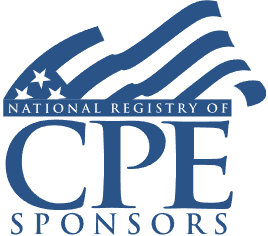ASU 2023-09 & ASC 740: New Income Tax Disclosures, Rate Reconciliation and Income Taxes Paid Guidelines

Course Details
- smart_display Format
Live Online with Live Q&A
- signal_cellular_alt Difficulty Level
Intermediate
- work Practice Area
Accounting
- event Date
Thursday, May 22, 2025
- schedule Time
1:00 p.m. ET./10:00 a.m. PT
- timer Program Length
110 minutes
-
BARBRI is a NASBA CPE sponsor and this 110-minute webinar is accredited for 2.0 CPE credits.
This webinar will address the recent Accounting Standards Update, ASU 2023-09. Our panel of accounting and assurance veterans will explain the new income tax disclosure requirements and provide comprehensive examples using real world scenarios of its application.
Faculty

Ms. LaPorte is the the director of tax for the Macomb office, she is responsible for the overall coordination and delivery of tax services. She also provide advice to business leaders on a wide range of tax and business matters. Ms. LaPorte is a key member of the income tax provision and corporate tax leadership team, she offers guidance to clients and internal staff on the tax implications for financial statements. Her clients are primarily in the manufacturing and distribution and service industries with tax compliance, they are mostly private and public companies with revenues ranging from $12 to $800 million.

Mr. Babiak, CPA, MST, is a Tax Partner and member of the firm’s Professional Services and Technology Groups. He brings more than 15 years of experience in public accounting to the firm. Mr. Babiak specializes in strategic tax planning, tax compliance, and state and local tax matters for entrepreneurial, venture capital and private equity-backed businesses ranging from start-ups to growing and established technology companies. He works closely with founders, advising them on tax strategies and complex equity and debt considerations. In addition, Mr. Babiak specializes in working with blockchain and digital assets, SaaS, e-commerce, and consumer product companies.
Description
In December 2023, FASB issued ASU 2023-09, Improvements to Income Tax Disclosures. According to FASB, "The Board is issuing the amendments in this Update to enhance the transparency and decision usefulness of income tax disclosures." All businesses subject to ASC 740, Accounting for Income Taxes, are subject to the new disclosure requirements.
The new ASU includes guidelines for two new disclosures: a rate reconciliation disclosure and another for income taxes paid. Specifically, public business entities are required to include a rate reconciliation disclosure that consists of a tabular reconciliation with percentages and currency amounts in eight specific categories. These categories include state and local income taxes, tax credits, and changes in valuation allowances. Entities other than public business entities must disclose the nature and effect of specific reconciling items but are not required to prepare a numerical reconciliation.
ASU 2023-09 is effective for public entities for periods beginning after Dec. 15, 2024. For other entities, the effective date begins for reporting periods after Dec. 15, 2025. Earlier implementation is permitted. Financial statement preparers and businesses must understand and incorporate the disclosures required by ASU 2023-09.
Listen as our panel of financial reporting experts explains the ASU 2023-09, Improvements to Income Tax Disclosures, and offers suggestions to facilitate the transition from prior guidance.
Outline
- Understanding ASU 2023-09
- Effective dates for public and private companies
- Calculating and presenting the income tax rate reconciliation
- Calculating and presenting the income taxes paid by jurisdiction
- Transition considerations from prior guidance
- Real world scenarios
- Avoiding common pitfalls
Benefits
The panel will cover these and other critical issues:
- How ASU 2023-09 enhances the income tax footnote
- How does the new ASU compare to FASB's historical push to simplify disclosures subject to ASC 740?
- What private companies should be doing now to prepare
- Using qualitative disclosures to enhance tabular schedules with quantitative disclosures
NASBA Details
Learning Objectives
After completing this course, you will be able to:
- Identify categories included in the tabular rate reconciliation for public entities
- Determine effective dates of ASU 2023-09 for public and non-public entities
- Decide how to calculate and present income taxes paid by jurisdiction under ASU 2023-09
- Ascertain common pitfalls to avoid when implementing ASU 2023-09
- Field of Study: Accounting
- Level of Knowledge: Intermediate
- Advance Preparation: None
- Teaching Method: Seminar/Lecture
- Delivery Method: Group-Internet (via computer)
- Attendance Monitoring Method: Attendance is monitored electronically via a participant's PIN and through a series of attendance verification prompts displayed throughout the program
- Prerequisite: Three years+ business or public firm experience at mid-level within the organization, preparing complex state income tax forms and schedules; supervisory authority over other preparers/accountants. Knowledge and understanding of state taxation of warranties, including mandatory, option and extended warranties; familiarity with sales tax nexus issues.

Strafford Publications, Inc. is registered with the National Association of State Boards of Accountancy (NASBA) as a sponsor of continuing professional education on the National Registry of CPE Sponsors. State boards of Accountancy have final authority on the acceptance of individual courses for CPE Credits. Complaints regarding registered sponsons may be submitted to NASBA through its website: www.nasbaregistry.org.
Unlimited access to CLE courses
- CLE Live Webinars
- CLE On Demand Webinars
- All CLE Course Materials
Unlimited access to CPE courses
- CPE Live Webinars
- CPE On Demand Webinars
- All CPE Course Materials
Unlimited access to all our courses including:
- CLE Live Webinars
- CPE On Demand Webinars
- Professional Skills
Related Courses

State Tax Treatment of UBTI for Exempt Organizations: Calculations, Conformance, and Apportionment
Friday, April 18, 2025
1:00 p.m. ET./10:00 a.m. PT

ASU 2023-09 & ASC 740: New Income Tax Disclosures, Rate Reconciliation and Income Taxes Paid Guidelines
Friday, February 28, 2025
1:00 p.m. ET./10:00 a.m. PT

Charitable Donations of LLC and Limited Partnership Interests to Nonprofits
Available On-Demand
Recommended Resources
Gain a Competitive Edge Through Efficient CPE Strategies
- Learning & Development
- Business & Professional Skills
- Career Advancement